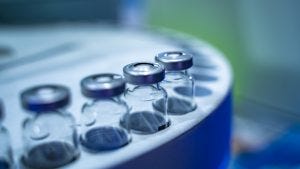
Vetter says the use of artificial intelligence will become ever more specific in the biopharma production space and plans to use robotics in aseptic processes.
German fill/finish and pharma services firm Vetter has completed a pilot project using a dual-arm robot in secondary packaging.
“Robotics have been widespread in pharmaceutical manufacturing for many years. At Vetter, for example, we have been using classical robotics in our pharmaceutical production since the 1990’s,” Vetter spokesperson Markus Kirchner told this publication.

Image: iStock/ArisSu
“We see the usage of this technology becoming ever-more specific and evolving over time. This is evidenced in our example of collaborative work, which is essentially a close interaction of humans and machines.”
The YuMi collaborative robot has been in use since 2018, bringing what the firm says is a high level of flexibility offering fast adaptation to changing product and packaging requirements.
“Following our successful implementation of collaborative work in secondary packaging, we plan to use a next model in the aseptic production process. The application is intended for what is known as speed-bin-picking. This is where prefilled syringes are placed into trays following terminal sterilization.”
Robotics are used across numerous industries and functions, and are slowly being introduced in the pharma space. Moderna, for example, has incorporated its own robotics in the production of its personalized cancer vaccine capabilities to its recently opened production facility in Norwood, Massachusetts.
However, industry is clearly not in a place to leave sole responsibility of producing biopharmaceuticals in the hands of machines.
“The bottom line is that all technological applications are operated and, of course, supervised by employees,” said Kirchner. “However, our manufacturing process is realized by utilizing a high level of automated technology. In the cleanroom, itself where the drug product is manufactured, all core steps that are taking place are fully-automated, e.g. to fulfil the strict aseptic requirements.”
Related content: Opportunities for Modern Robotics in Biologics Manufacturing
About the Author
You May Also Like

schedl_b_and_w.jpg?width=100&auto=webp&quality=80&disable=upscale)
schedl_b_and_w.jpg?width=400&auto=webp&quality=80&disable=upscale)


